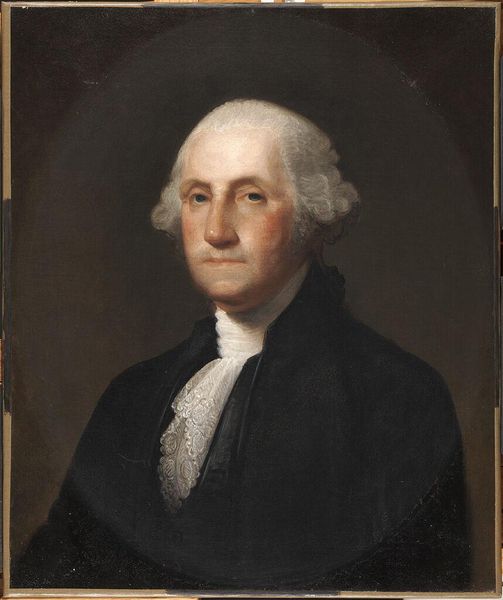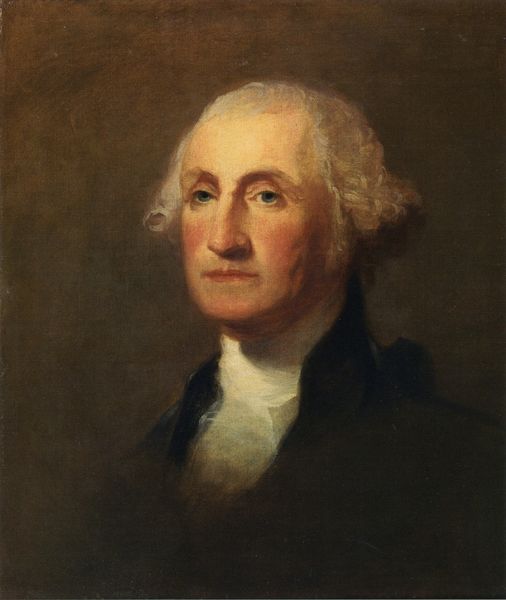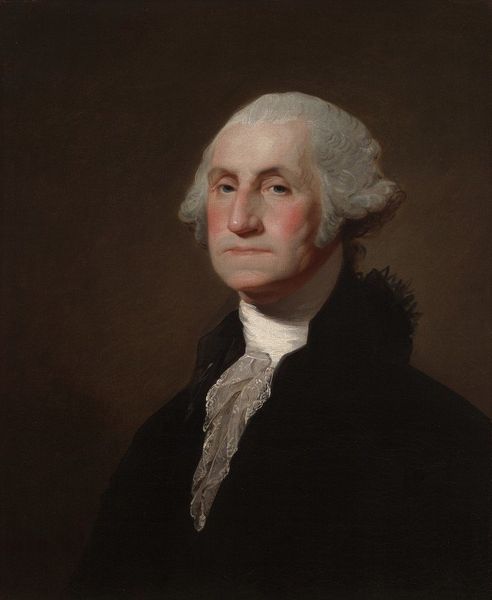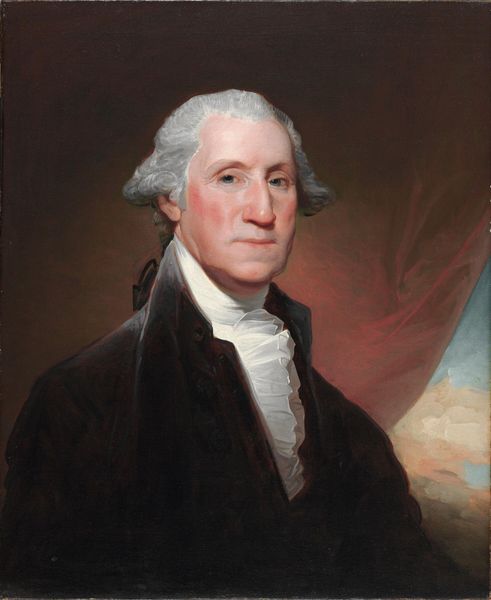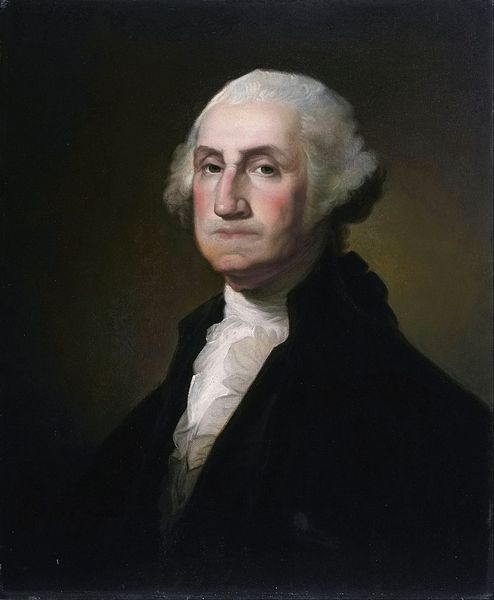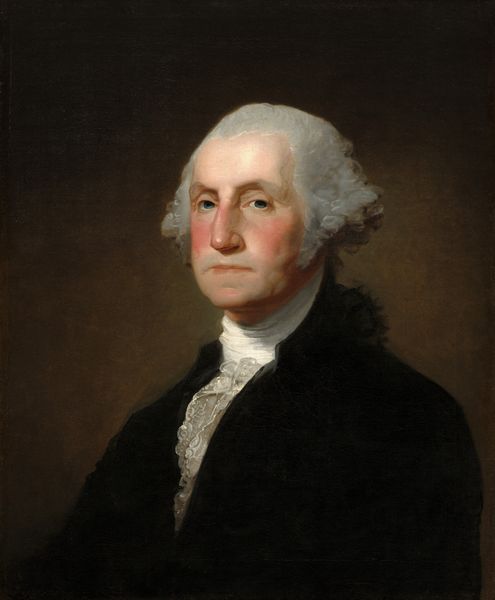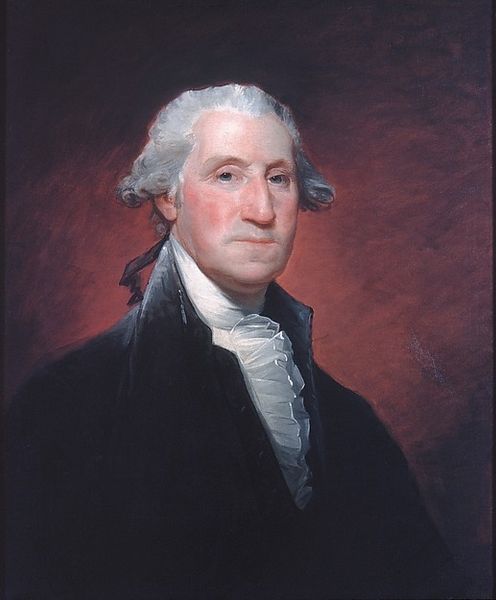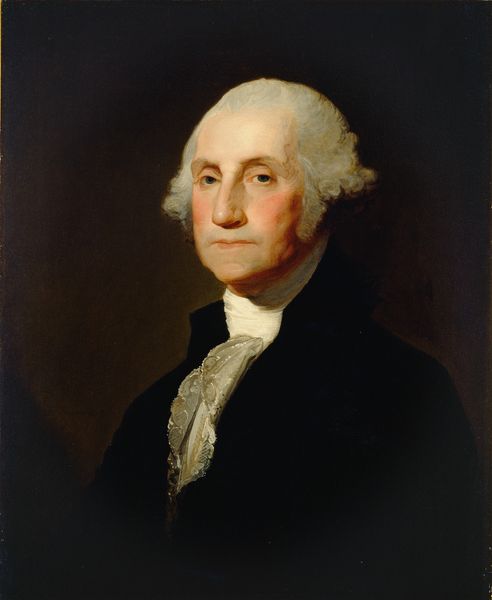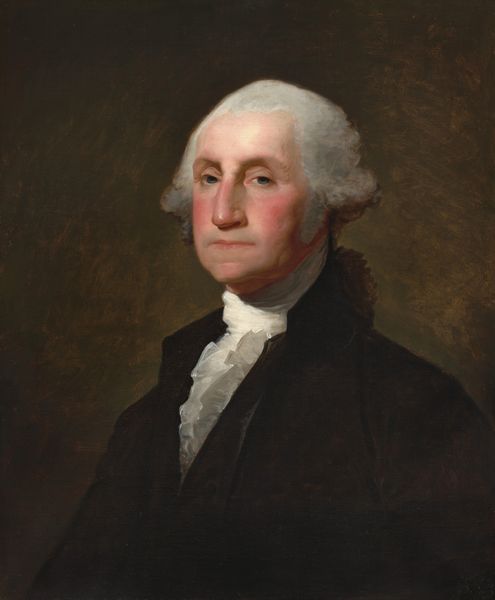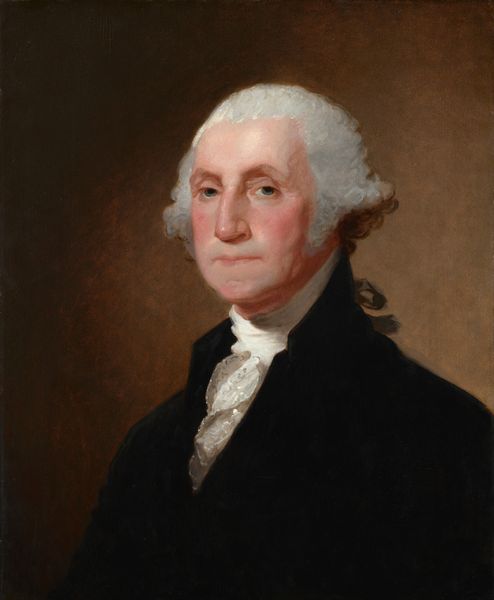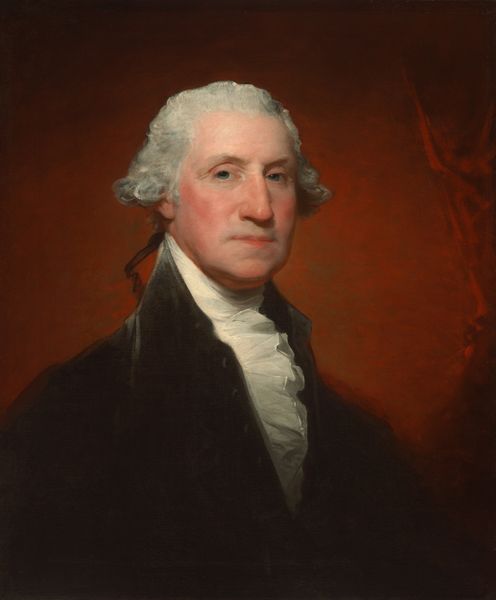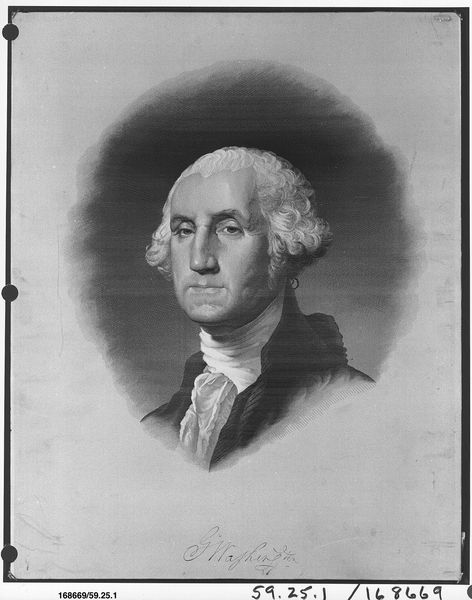
painting, oil-paint
#
portrait
#
neoclacissism
#
painting
#
oil-paint
#
history-painting
#
realism
Copyright: Public domain
Editor: Here we have Rembrandt Peale’s portrait of George Washington, painted in oil. The mood is quite serious and conveys a sense of authority. How do you interpret this work within its historical context? Curator: Beyond the surface-level representation of authority, this portrait engages with complex themes of power, identity, and historical memory. It’s crucial to consider Washington’s role in the context of nation-building and the ongoing legacy of colonialism and slavery. What do you notice about his gaze? Editor: He looks straight ahead with a very confident expression. Curator: Exactly. But consider that gaze within the context of who was *not* being represented in power at that time – enslaved people, indigenous populations, and women. Peale’s portrait normalizes a very specific and exclusionary vision of American identity. What do you think about the style in relation to Neoclassicism? Editor: I can see some of the Neoclassical elements – a certain formality, a focus on rationality and order…but the image itself doesn’t read like propaganda, although obviously it’s intended to create an impression of leadership and confidence. Curator: And what does it mean to create an 'objective' image when the very act of selection—who gets portrayed, how they are portrayed—is inherently subjective and political? Think about how portraiture has historically functioned as a tool for reinforcing power structures. It compels us to ask who benefits from this particular representation of history and who is marginalized or erased. Editor: That’s a powerful point. It definitely gives me a different perspective on how to view historical portraiture critically, considering it as an active agent in shaping social narratives, rather than just a passive depiction. Curator: Exactly! Considering that history isn’t a closed book, but a set of stories constantly being retold, reinterpreted, and reshaped.
Comments
No comments
Be the first to comment and join the conversation on the ultimate creative platform.
